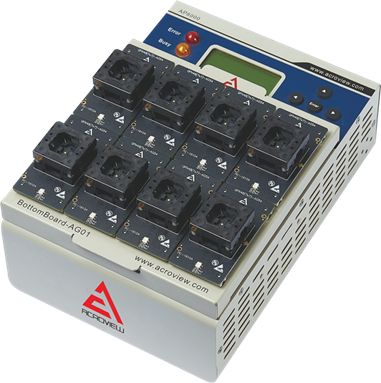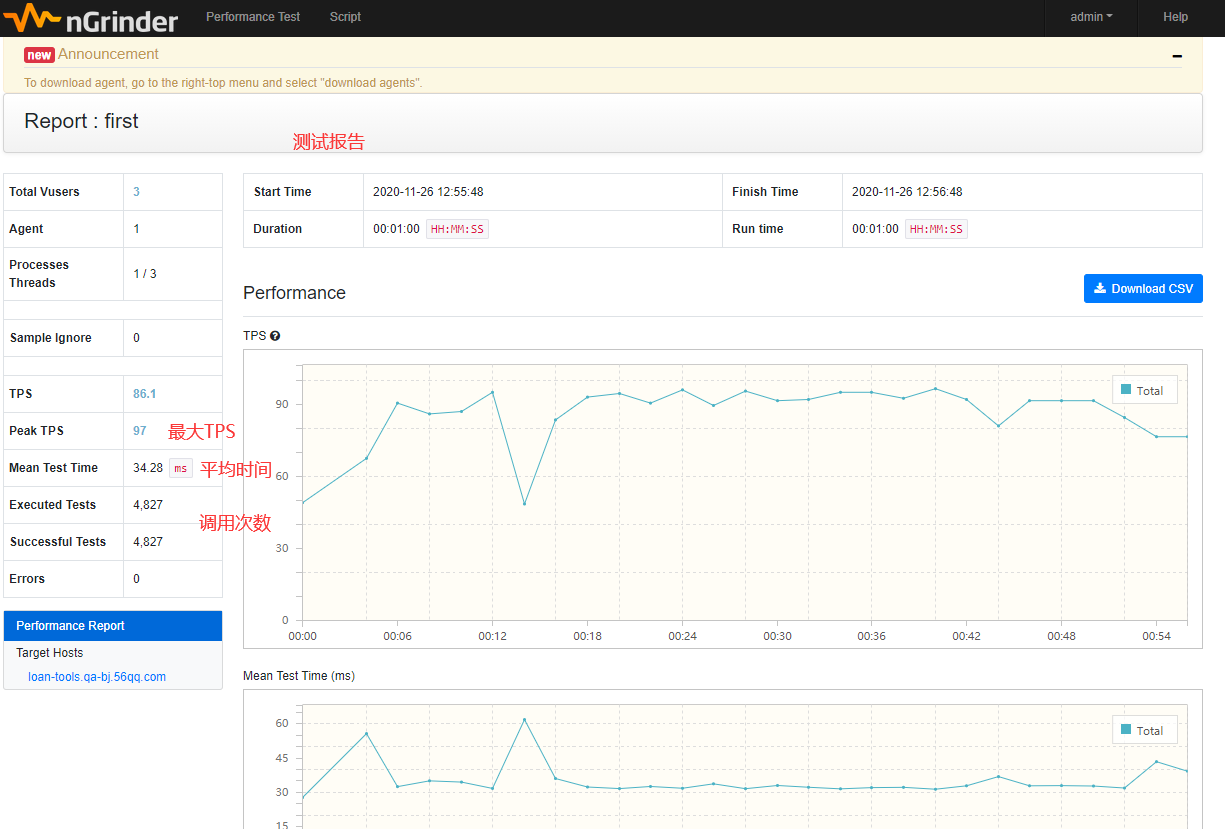目录
前言
一、基础知识准备
1.Object类
2.Integer类
2.1包装类
2.2装箱和拆箱
2.3Integer类的常见方法
二、代码实现
1.队列创建及初始化
2.方法创建
3.数据测试
4.完整的程序代码
总结
前言
在昨天,我们使用了两个队列来辅助完成二叉树的“压缩顺序存储”,一个是存放二叉树结点类型的数据队列,另一个是存放整数类型的下标队列,这样来看,对于不同的数据类型,难道我们都要单独编写一个队列吗?答案显然不是,事实上,我们只需要一个存储对象的队列就可以完成了,今天我们就来学习一下“通用性队列”。
一、基础知识准备
1.Object类
在昨天重写队列代码时,我们只提到了将数据类型char更改为object,并没有对其进行详细的说明,现在我们就来认识一下Object这个“老祖宗”。
其实早在日撸Java三百行(day12:顺序表二)我们第一次重写toString()方法的时候,就已经用到了Object类。在java中,Object类是所有类的根基类(父类),相当于所有类的“老祖宗”,这就意味着所有类都是Object类的子类,都可以继承Object类的属性和方法,也就是说任何java对象都可以调用Object类的方法。
如果在类的声明中,未使用extends关键字指明其父类,那么就会自动默认继承Object类,也就是说以下两种关于类的声明是等价的:
-
public class Person { ... } -
public class Person extends Object { ... }
下面我们再介绍几种Object类常用的方法:
- toString()方法:返回该对象的字符串形式
- equals()方法:比较两个对象的内容是否相等
- getClass()方法:返回该对象所属的类
前面我们说到Object类是所有类的父类,任何java对象都可以调用Object类的方法,由此得出所有类的对象都可以向Object转换,即一切的引用数据类型都可以用Object进行接收。而正是因为Object可以接收任意的引用数据类型,所以很多类都是以Object作为方法的参数,这样操作起来会更加方便。
注意,Object支持null的返回,这个特性关乎我们今日代码的成功与否。
2.Integer类
2.1包装类
java中的数据类型分为两大类,一类是基本数据类型,另一类是引用数据类型。基本数据类型只有8种,包括整数类型(long、int、short、byte),浮点类型(float、double),字符类型(char),布尔类型(boolean);而引用数据类型包括类、接口类型、数组类型、枚举类型、注解类型、字符串型等,简单来说所有的非基本数据类型都是引用数据类型。
显然,基本数据类型肯定不能够称之为对象,所以java为每种基本数据类型分别设计了对应的类,这个类就是所谓的包装类。包装类是不可修改的,一旦构造了包装类对象,就不能改变对应包装类中的属性和方法,同时包装类是被final关键字修饰的类,因此不能被继承。基本数据类型及对应的包装类如下表:
| 基本数据类型 | 对应的包装类 | |
| 整数类型 | byte | Byte |
| short | Short | |
| int | Integer | |
| long | Long | |
| 浮点类型 | float | Float |
| double | Double | |
| 字符类型 | char | Character |
| 布尔类型 | boolean | Boolean |
从上表可以看出,除了int和char,其余基本数据类型的包装类名称都只变了首字母。
2.2装箱和拆箱
了解了包装类的概念后,下面我们介绍装箱和拆箱。
- 装箱:将基本数据类型转换为包装类的过程,比如把int包装成Integer类的对象
- 拆箱:包装类转换为基本数据类型的过程,比如把Integer类的对象重新简化成int
手动包装一个基本数据类型成对象叫做手动装箱,手动实例化一个包装类叫做手动拆箱。Java 1.5版本之后出现了自动装箱拆箱,即进行基本数据类型和对应包装类的转换时,系统自动进行装箱拆箱操作,不用再自己手动操作。
2.3Integer类的常见方法
- longValue():将Integer类型转换为基本数据类型long
- inValue():将Integer类型转换为基本数据类型int
- shortValue():将Integer类型转换为基本数据类型short
- byteValue():将Integer类型转换为基本数据类型byte
- Integer.valueOf(int i):通过类名直接调用静态方法valueOf()将int转换为Integer类型
- Integer.valueOf(String s):通过类名直接调用静态方法valueOf()将String转换为Integer类型
二、代码实现
1.队列创建及初始化
因为昨天我们重写的队列代码CircleObjectQueue就是Object类型的(即定义的就是存储对象的队列),所以这里直接创建两个对象即可。数据队列将this入队,作为根结点,这个和昨天一样,没什么好说的;接着来到下标队列,由于昨天我们用的是int类型的队列作为下标队列,所以可以直接将索引值0入队,但是今天我们使用了Object类型的队列作为下标队列,而0是int基本数据类型,显然不可能直接入队,需要先利用Integer.valueOf()方法将0转换为Integer类型,然后赋给Integer类型的变量tempIndexInteger,最后再将tempIndexInteger入队。(说明:因为Integer类型是引用数据类型,所以可以被Object接收)
CircleObjectQueue tempQueue = new CircleObjectQueue();
tempQueue.enqueue(this);
CircleObjectQueue tempIntQueue = new CircleObjectQueue();
Integer tempIndexInteger = Integer.valueOf(0);
tempIntQueue.enqueue(tempIndexInteger);2.方法创建
核心方法的大体思路以及具体步骤几乎和昨天一样,只需要更改几个细节即可。
第2行代码,昨天我们是出队后直接赋给tempIndex,而今天出队后还需要调用intValue()方法,将Integer类型转换为int类型,再赋给int类型的变量tempIndex。为了确保不出错,这里我们增加了一个输出语句,用于检查tempIndex的值是否正确。
第11行代码,和刚刚索引值0入队一样,需要在入队前利用Integer.valueOf()方法将其转换为Integer类型,然后再入队。
第15行代码同上。
第19行代码,在介绍Object类时,我们强调了Object类支持null的返回,该特性影响的就是这个地方。如果在这里我们不增加该if语句,那么就会出现如下的报错,这是因为Object类支持null的返回,但是null无法被int强制转换。为了避免上述问题,我们利用break语句,使得当tempTree = null时就跳出循环。

第23行代码,和第2行代码一样,出队后需要调用intValue()方法将其转换为int类型。
BinaryCharTree tempTree = (BinaryCharTree) tempQueue.dequeue();
int tempIndex = ((Integer)tempIntQueue.dequeue()).intValue();
System.out.println("tempIndex = " + tempIndex);
while (tempTree != null) {
valuesArray[i] = tempTree.value;
indicesArray[i] = tempIndex;
i++;
if (tempTree.leftChild != null) {
tempQueue.enqueue(tempTree.leftChild);
tempIntQueue.enqueue(Integer.valueOf(tempIndex * 2 + 1));
} // of if
if (tempTree.leftChild != null) {
tempQueue.enqueue(tempTree.leftChild);
tempIntQueue.enqueue(Integer.valueOf(tempIndex * 2 + 2));
} // of if
tempTree = (BinaryCharTree) tempQueue.dequeue();
if (tempTree == null) {
break;
} // of if
tempIndex = ((Integer)tempIntQueue.dequeue()).intValue();
} // of while关于根结点与左右子树下标关系的补充:
这是昨天“压缩顺序存储”的图,我们可以发现
根结点A下标为0,其左子树B下标为1(0*2+1=1),右子树C下标为2(0*2+2=2);
根结点B下标为1,其无左子树,右子树D下标为4(1*2+2=4)
根结点C下标为2,其左子树E下标为5(2*2+1=5)
…………
所以就有了我们程序中的tempIndex * 2 + 1和tempIndex * 2 + 2。
3.数据测试
然后,仍然借助我们之前手动创建的二叉树进行数据测试,如下:
/**
*********************
* The entrance of the program.
*
* @param args Not used now.
*********************
*/
public static void main(String args[]) {
BinaryCharTree tempTree = manualConstructTree();
System.out.println("\r\nPreorder visit:");
tempTree.preOrderVisit();
System.out.println("\r\nIn-order visit:");
tempTree.inOrderVisit();
System.out.println("\r\nPost-order visit:");
tempTree.postOrderVisit();
System.out.println("\r\n\r\nThe depth is: " + tempTree.getDepth());
System.out.println("The number of nodes is: " + tempTree.getNumNodes());
tempTree.toDataArrays();
System.out.println("The values are: " + Arrays.toString(tempTree.valuesArray));
System.out.println("The indices are: " + Arrays.toString(tempTree.indicesArray));
tempTree.toDataArraysObjectQueue();
System.out.println("Only object queue.");
System.out.println("The values are: " + Arrays.toString(tempTree.valuesArray));
System.out.println("The indices are: " + Arrays.toString(tempTree.indicesArray));
}// Of main4.完整的程序代码
package datastructure.tree;
import datastructure.queue.*;
import java.util.Arrays;
/**
* Binary tree with char type elements.
*
*@auther Xin Lin 3101540094@qq.com.
*/
public class BinaryCharTree {
/**
* The value
*/
char value;
/**
* The left child
*/
BinaryCharTree leftChild;
/**
* The right child
*/
BinaryCharTree rightChild;
/**
*********************
* The first constructor.
*
* @param paraName The value.
*********************
*/
public BinaryCharTree(char paraName) {
value = paraName;
leftChild = null;
rightChild = null;
} // of constructor
/**
*********************
* Manually construct a tree. Only for testing.
*********************
*/
public static BinaryCharTree manualConstructTree() {
// Step 1. Construct a tree with only one node.
BinaryCharTree resultTree = new BinaryCharTree('a');
// Step 2. Construct all Nodes. The first node is the root.
// BinaryCharTree tempTreeA = resultTree.root;
BinaryCharTree tempTreeB = new BinaryCharTree('b');
BinaryCharTree tempTreeC = new BinaryCharTree('c');
BinaryCharTree tempTreeD = new BinaryCharTree('d');
BinaryCharTree tempTreeE = new BinaryCharTree('e');
BinaryCharTree tempTreeF = new BinaryCharTree('f');
BinaryCharTree tempTreeG = new BinaryCharTree('g');
// Step 3. Link all Nodes.
resultTree.leftChild = tempTreeB;
resultTree.rightChild = tempTreeC;
tempTreeB.rightChild = tempTreeD;
tempTreeC.leftChild = tempTreeE;
tempTreeD.leftChild = tempTreeF;
tempTreeD.rightChild = tempTreeG;
return resultTree;
} // of manualConstructTree
/**
*********************
* Pre-order visit.
*********************
*/
public void preOrderVisit() {
System.out.print("" + value + " ");
if(leftChild != null) {
leftChild.preOrderVisit();
} // of if
if(rightChild != null) {
rightChild.preOrderVisit();
} // of if
} // of preOrderVisit
/**
*********************
* In-order visit.
*********************
*/
public void inOrderVisit() {
if(leftChild != null) {
leftChild.inOrderVisit();
} // of if
System.out.print("" + value + " ");
if(rightChild != null) {
rightChild.inOrderVisit();
} // of if
} // of inOrderVisit
/**
*********************
* Post-order visit.
*********************
*/
public void postOrderVisit() {
if(leftChild != null) {
leftChild.postOrderVisit();
} // of if
if(rightChild != null) {
rightChild.postOrderVisit();
} // of if
System.out.print("" + value + " ");
} // of postOrderVisit
/**
*********************
* Get the depth of the binary char tree.
*
* @return The depth.
*********************
*/
public int getDepth() {
if((leftChild == null) && (rightChild == null)) {
return 1;
} // of if
// The depth of the left child.
int tempLeftDepth = 0;
if(leftChild != null) {
tempLeftDepth = leftChild.getDepth();
} // of if
// The depth of the right child.
int tempRightDepth = 0;
if(rightChild != null) {
tempRightDepth = rightChild.getDepth();
} // of if
if(tempLeftDepth >= tempRightDepth) {
return tempLeftDepth + 1;
} else {
return tempRightDepth + 1;
} // of if
} // of getDepth
/**
*********************
* Get the number of nodes of the binary char tree.
*
* @return The number of nodes.
*********************
*/
public int getNumNodes() {
if((leftChild == null) && (rightChild == null)) {
return 1;
} // of if
// The number of nodes of the left child.
int tempLeftNodes = 0;
if(leftChild != null) {
tempLeftNodes = leftChild.getNumNodes();
} // of if
// The number of nodes of the right child.
int tempRightNodes = 0;
if(rightChild != null) {
tempRightNodes = rightChild.getNumNodes();
} // of if
// The total number of nodes.
return tempLeftNodes + tempRightNodes + 1;
} // of getNumNodes
/**
* The values of nodes according to breadth first traversal.
*/
char[] valuesArray;
/**
* The indices in the complete binary tree.
*/
int[] indicesArray;
/**
********************
* Convert the tree to data arrays, including a char array and an int array.
* The results are stored in two member variables.
*
* @see #valuesArray
* @see #indicesArray
*********************
*/
public void toDataArrays() {
//Initialize arrays.
int tempLength = getNumNodes();
valuesArray = new char[tempLength];
indicesArray = new int[tempLength];
int i = 0;
//Traverse and convert at the same time.
CircleObjectQueue tempQueue = new CircleObjectQueue();
tempQueue.enqueue(this);
CircleIntQueue tempIntQueue = new CircleIntQueue();
tempIntQueue.enqueue(0);
BinaryCharTree tempTree = (BinaryCharTree) tempQueue.dequeue();
int tempIndex = tempIntQueue.dequeue();
while (tempTree != null) {
valuesArray[i] = tempTree.value;
indicesArray[i] = tempIndex;
i++;
if (tempTree.leftChild != null) {
tempQueue.enqueue(tempTree.leftChild);
tempIntQueue.enqueue(tempIndex * 2 + 1);
} // Of if
if (tempTree.rightChild != null) {
tempQueue.enqueue(tempTree.rightChild);
tempIntQueue.enqueue(tempIndex * 2 + 2);
} // Of if
tempTree = (BinaryCharTree) tempQueue.dequeue();
tempIndex = tempIntQueue.dequeue();
} // Of while
} // Of toDataArrays
/**
********************
* Convert the tree to data arrays, including a char array and an int array.
* The results are stored in two member variables.
*
* @see #valuesArray
* @see #indicesArray
*********************
*/
public void toDataArraysObjectQueue() {
//Initialize arrays.
int tempLength = getNumNodes();
valuesArray = new char[tempLength];
indicesArray = new int[tempLength];
int i = 0;
//Traverse and convert at the same time.
CircleObjectQueue tempQueue = new CircleObjectQueue();
tempQueue.enqueue(this);
CircleObjectQueue tempIntQueue = new CircleObjectQueue();
Integer tempIndexInteger = Integer.valueOf(0);
tempIntQueue.enqueue(tempIndexInteger);
BinaryCharTree tempTree = (BinaryCharTree) tempQueue.dequeue();
int tempIndex = ((Integer)tempIntQueue.dequeue()).intValue();
System.out.println("tempIndex = " + tempIndex);
while (tempTree != null) {
valuesArray[i] = tempTree.value;
indicesArray[i] = tempIndex;
i++;
if (tempTree.leftChild != null) {
tempQueue.enqueue(tempTree.leftChild);
tempIntQueue.enqueue(Integer.valueOf(tempIndex * 2 + 1));
} // of if
if (tempTree.leftChild != null) {
tempQueue.enqueue(tempTree.leftChild);
tempIntQueue.enqueue(Integer.valueOf(tempIndex * 2 + 2));
} // of if
tempTree = (BinaryCharTree) tempQueue.dequeue();
if (tempTree == null) {
break;
} // of if
tempIndex = ((Integer)tempIntQueue.dequeue()).intValue();
} // of while
} // of toDataArraysObjectQueue
/**
*********************
* The entrance of the program.
*
* @param args Not used now.
*********************
*/
public static void main(String args[]) {
BinaryCharTree tempTree = manualConstructTree();
System.out.println("\r\nPreorder visit:");
tempTree.preOrderVisit();
System.out.println("\r\nIn-order visit:");
tempTree.inOrderVisit();
System.out.println("\r\nPost-order visit:");
tempTree.postOrderVisit();
System.out.println("\r\n\r\nThe depth is: " + tempTree.getDepth());
System.out.println("The number of nodes is: " + tempTree.getNumNodes());
tempTree.toDataArrays();
System.out.println("The values are: " + Arrays.toString(tempTree.valuesArray));
System.out.println("The indices are: " + Arrays.toString(tempTree.indicesArray));
tempTree.toDataArraysObjectQueue();
System.out.println("Only object queue.");
System.out.println("The values are: " + Arrays.toString(tempTree.valuesArray));
System.out.println("The indices are: " + Arrays.toString(tempTree.indicesArray));
}// Of main
} // of class BinaryCharTree运行结果

总结
今天的代码量并不多,就是通过使用通用性队列将昨天的代码进行简化,提高代码的复用性。面对不同的数据类型,我们可以使用通用性队列进行处理,那么二叉树呢?显然,二叉树同样可以处理不同的数据类型,只要我们将char value改成object value,再进行一些强制类型转换即可。
数据类型有多种,数据结构也有多种,如果每种数据结构都要针对不同的数据类型进行重写,这样就太繁琐了,所以我们要学会考虑用一些方法提高代码的复用性,比如今天提到的利用Object类,再比如之前提到的java泛型数据。















![[ Python 原理分析 ]如何实现用户实现博客文章点赞-物联网Python](https://i-blog.csdnimg.cn/direct/33101d955e19470a858fcad38799d2e8.png)




